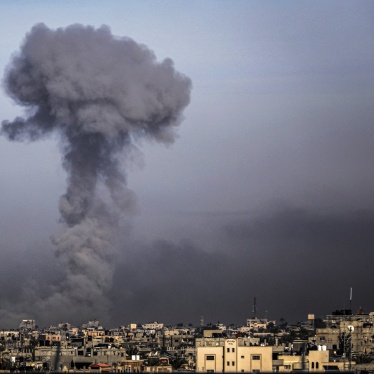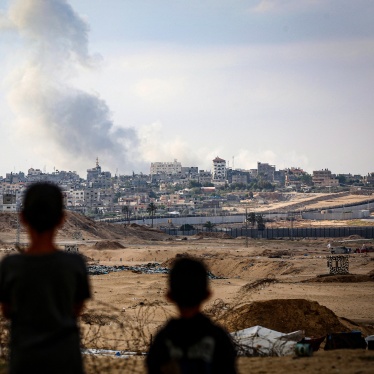Mr. President,
The Convention on Cluster Munition’s stockpile destruction provisions are at the heart of the convention’s ability to prevent further suffering and damage from these indiscriminate weapons. Every state that destroys its stocks contributes in a concrete and immediate way to lowering the global risk of transfers, use, and future humanitarian harm from cluster munitions.
For this reason, the Cluster Munition Coalition has repeatedly insisted on the need for States Parties to destroy their stocks in the shortest possible timeframe, and certainly within the convention’s eight-year deadline. We do not see any reason that any state should need longer than eight years to fulfill this obligation, and therefore we expect the article’s deadline extension provision never to be used. Through early action and sufficient ambition, we believe that all states can destroy their stocks long before the eight-year deadline.
We have every reason to be optimistic based on the actions States Parties and signatories have already taken. A total of 12 States Parties have reported the destruction of 589,737 cluster munitions containing over 64.5 million submunitions. Eight States Parties have completed destruction of their stockpiled cluster munitions between 2004 and 2011: Austria, Belgium, Ecuador, Moldova, Montenegro, and Norway, Portugal, and Spain.
In addition, six signatories have reported the completion of destruction of their stockpiles, including Colombia and the Czech Republic in 2010 and Hungary in May 2011. Afghanistan and Angola reported in 2010 that their cluster munition stocks had been destroyed in recent years as part of broader weapons disposal programs. Signatory Honduras has said it destroyed its stocks prior to the Oslo Process.
The CMC would like to congratulate all of these states for their early action, which shows their strong commitment to the convention and its goal of permanently eradicating cluster munitions.
There are now 12 States Parties with stockpiles still to destroy: Bosnia and Herzegovina, Bulgaria, Chile, Croatia, Denmark, France, Germany, Guinea-Bissau, Japan, the Netherlands, Slovenia, and the UK. These states committed through the Vientiane Action Plan within the first year of joining the convention to develop a plan with a budget and timeline for finishing destruction, and to begin destruction as soon as possible. All of these states have indicated they will complete destruction within the convention’s eight-year deadline, if not sooner, though not all have developed or shared concrete plans yet.
Two of the biggest stockpilers, Germany (with 67 million submunitions) and the United Kingdom (with 39 million submunitions) had destroyed more than half of their respective stockpiles by mid-2011 and said they planned to finish destruction in 2015 and 2013, respectively. Slovenia also announced plans to destroy its small stockpile this year. We hope to hear from Denmark and Japan, which are still in the process of assessing their stocks and developing a plan, that they will be as equally ambitious as these states. We were disappointed to hear that France revised its initial estimate of six years to destroy stocks and now intends to use the full eight-year period for destruction. The Netherlands has reportedly destroyed much of its former stockpile containing some 26 million submunitions but has not presented a complete destruction plan. We understand that Croatia and Bosnia and Herzegovina also are aiming to finish in a short timeframe with international assistance.
In the Vientiane Action Plan, states also committed to alerting other states and organizations in a timely manner about any challenges they might be facing, especially those that could be addressed through international assistance. States Parties in need have the right to request international assistance for stockpile destruction, and others have an obligation to provide it. Given the large amount of stockpiled cluster munitions and the preventative focus of the convention, donor states should make assistance for stockpile destruction an integral part of their overall assistance under the convention.
As we have said before, the CMC believes – and has seen in practice – that stockpile destruction does not need to be an economically burdensome or technically complex process.While for some states, industrial destruction facilities are the best solution, for many others, in particular those with small stockpiles, it is possible to develop small-scale national destruction programs that are affordable, safe, practical and environmentally friendly. Technical assistance is available from a wide number of actors, including from NGOs working in clearance and destruction, UN agencies, and the large number of states for whom destruction and demilitarization of old munitions is a routine part of their armed forces’ activities. Moldova, working with support from Norwegian People’s Aid, showed that low-cost, low-tech solutions can easily be provided, and other states such as Croatia are considering similar approaches.
Transparency is also an essential element for the full implementation of Article 3. States Parties need to clearly indicate the size of their current stockpiles in their initial and annual reports, including entering zero and not just “non-applicable” if a state has no stockpiles. We look forward to seeing this information from Chile and Guinea-Bissau in their reports due later this year. We still know too little about the stockpiles of signatories and other states not party, and we strongly encourage them to provide such information either through voluntary transparency reports or at convention meetings.
Transparency reports must also provide clear information on the “status and progress” of stockpile destruction programs, meaning states should be providing information on how many cluster munitions and submunitions have been destroyed, as well as clear plans for future destruction. Indications of any required international assistance could be indicated, while information on national contributions must be included.
In closing, Mr. President, it appears that stockpile destruction is one of the earliest good news stories of the convention. The CMC remains confident that it will remain so as long as states remain as ambitious as they have started out, if technical and financial assistance for those in need are provided in a timely manner with a state-specific approach, and if states continue to provide clear information on their progress in Article 7 reports and convention meetings.
Thank you.







